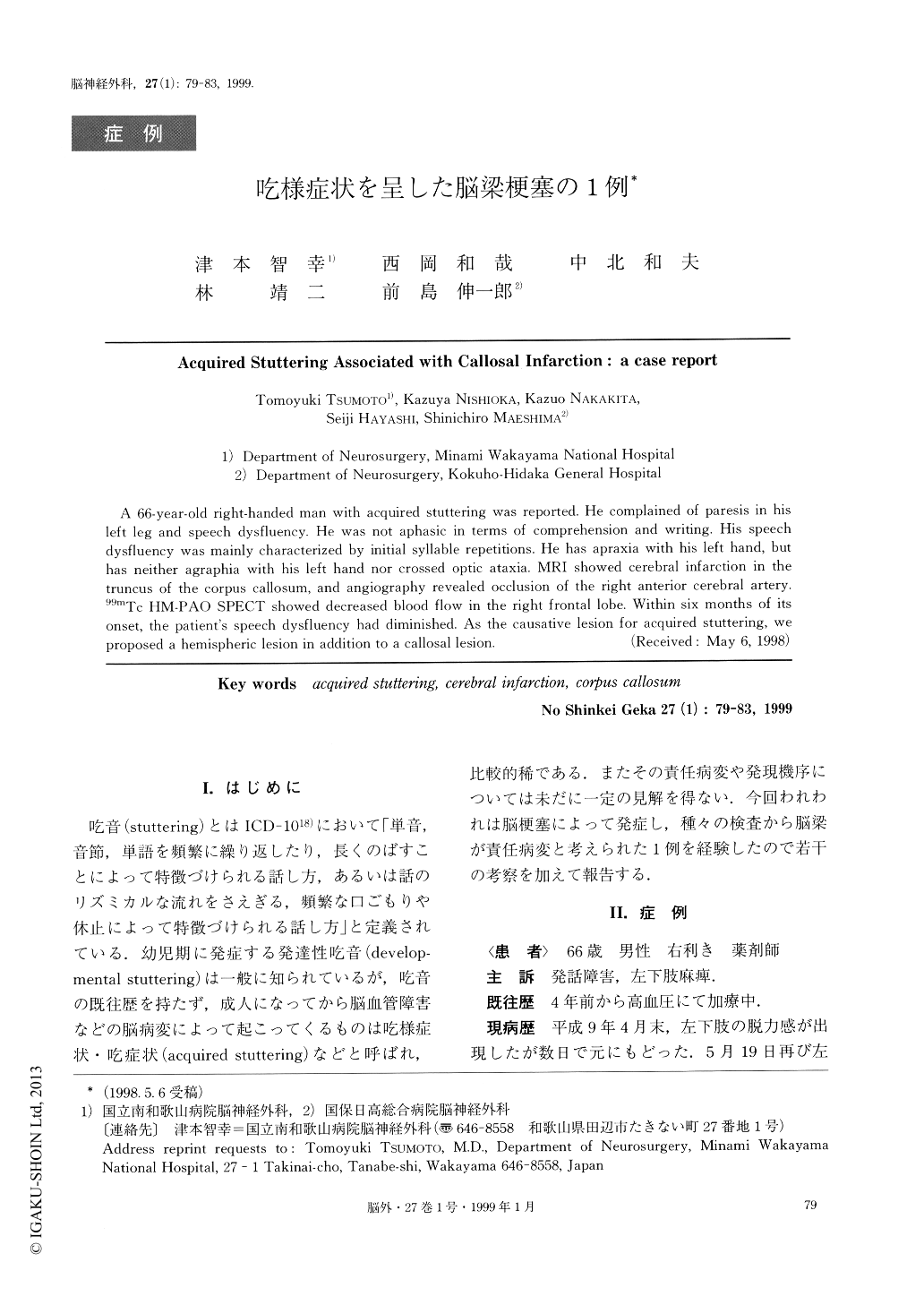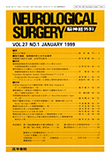Japanese
English
- 有料閲覧
- Abstract 文献概要
- 1ページ目 Look Inside
I.はじめに
吃音(stuttering)とはICD-1018)において「単音,音節,単語を頻繁に繰り返したり,長くのばすことによって特徴づけられる話し方,あるいは話のリズミカルな流れをさえぎる,頻繁な口ごもりや休止によって特徴づけられる話し方」と定義されている.幼児期に発症する発達性吃音(develop-mental stuttering)は一般に知られているが,吃音の既往歴を持たず,成人になってから脳血管障害などの脳病変によって起こってくるものは吃様症状・吃症状(acquired stuttering)などと呼ばれ,比較的稀である.またその責任病変や発現機序については未だに一定の見解を得ない.今回われわれは脳梗塞によって発症し,種々の検査から脳梁が責任病変と考えられた1例を経験したので若干の考察を加えて報告する.
A 66-year-old right-handed man with acquired stuttering was reported. He complained of paresis in hisleft leg and speech dysfluency. He was not aphasic in terms of comprehension and writing. His speechdysfluency was mainly characterized by initial syllable repetitions. He has apraxia with his left hand, buthas neither agraphia with his left hand nor crossed optic ataxia. MRI showed cerebral infarction in thetruncus of the corpus callosum, and angiography revealed occlusion of the right anterior cerebral artery. 99mTc HM-PAO SPECT showed decreased blood flow in the right frontal lobe. Within six months of itsonset, the patient's speech dysfluency had diminished. As the causative lesion for acquired stuttering, weproposed a hemispheric lesion in addition to a callosal lesion.

Copyright © 1999, Igaku-Shoin Ltd. All rights reserved.


